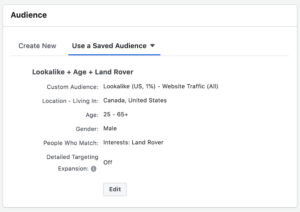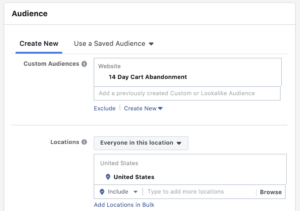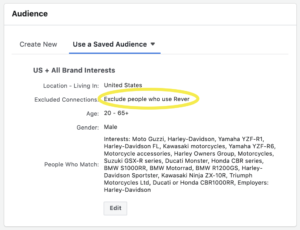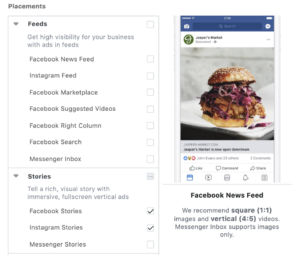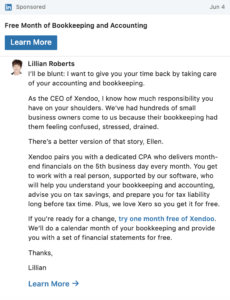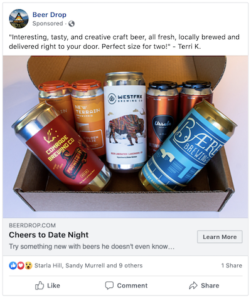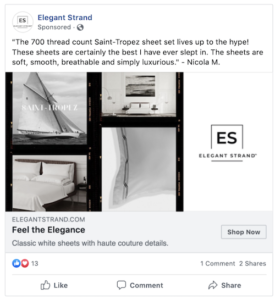Every single result from our campaigns in Q1 & Q2 (and learnings for Q3 & Q4)
Finding the right paid acquisition channels is the key to unlocking effective growth for your company.
But how do you find the perfect mix without wasting money?
Instead of churning out as many ads as possible and hoping for the best, you should be testing and perfecting early on. At Tuff, we partner with clients to learn what’s working and what’s not so we can prioritize the tactics that will help increase reach, leads, and revenue.
Here’s the process we follow to do this:
- Growth starts with identifying your audience, their problem, and how you solve it.
- Then, we use data and analytics to benchmark your goals.
- Next up, we select and prioritize highly targeted marketing tactics.
- Then, execute, test, and learn. Repeat, repeat, repeat.
With that in mind, we analyzed 150 of our clients’ top-performing paid advertising campaigns from Q1 and Q2 of this year to highlight some common trends.
Here, we share what we learned and how you can find greater success in Q3 and Q4.
Facebook and Instagram
We all should have some form of a social media strategy. Seven in 10 adults in the US are active on Facebook, and Instagram now enjoys more than one billion monthly users.
Whether you’re ready to expand your strategy to include paid social or you want to focus your current paid strategy, there are three tactics you should be using to make the most of your social advertising dollars:
1. Test multiple audiences and then refine
When it comes to success on Facebook and Instagram, we spend the majority of our strategy and execution efforts on the audience builds in Ads Manager. You can’t do anything without the right targeting and it’s something you’ll test often. If you want to effectively use Facebook and Instagram to reach your goals, start with your audience and work to understand their pain points, interests, location, and purchase behaviors.
Here are three audience segments we’ve seen work incredibly well on Facebook and Instagram:
Lookalike Audiences: This is a pre-qualified way to draw potential customers into the fold. It works by taking data on your current customers and searching for Facebook members with overlapping interests and connections. It’s a cool bit of matchmaking that can help you uncover a whole new group of potentially loyal new customers. If your website has a decent amount of traffic, start with website Lookalike Audiences of 1-3% and layer on interests or purchase behaviors for more granularity.
Custom Audiences: If you have an email list of customers or subscribers, upload it to Facebook. From here, you target these matches or create a Lookalike Audience and target people similar to your existing list. With Lookalikes, we like to layer on interests and behaviors and build a collection of audiences that range in sizes narrow through broad.
Abandoners: Can you think about your user journey and create specific campaigns for people who drop out of your funnel? For example with ecommerce, we target people who almost bought made a purchase but that needed an extra nudge to make it happen.
2. Exclude current customers or users
Just as you can customize an audience on Facebook and Instagram based on who you want to include, you can also intentionally leave people out. There are plenty of reasons you may want to exclude someone from a targeted audience, but you especially don’t want to waste precious ad dollars on customers that you’ve already converted. There is a time, place, and way to re-engage those customers purposefully, so don’t lump them in with your new leads.
3. Isolate placements using data
Once you’ve zeroed in your audience, meet them where they are. Just as it was in the days of traditional media buying, placement is everything. When results vary drastically by placement, we’ll look to isolate placements if we think we can ramp up performance on one platform or placement more than others or exclude placements if they are dragging down results. Finding the right spot to place your ad (mobile, Instagram, news feed, etc.) will also help you determine how to best design it for optimal results.
LinkedIn is an especially powerful tool if you’re focused on B2B.
Ninety-three percent of B2B marketers now consider LinkedIn the most effective site for lead generation.
There are two strategies to consider if you’re putting money into LinkedIn:
1. Stick with sponsored InMail for lead generation
This ad type allows you to send personalized messages to customized audiences and straddles the line between outbound email and sponsored content. It works like a message in that it’s delivered to the user’s inbox but includes a CTA button that links to your chosen landing page. It’s easy to aggregate an audience, and they’re sure to be primed for engagement, as it’s only delivered to active audiences. When it comes to B2B leads, this is costly but effective.
2. Use Sponsored Posts for awareness and traffic
Sponsored posts on LinkedIn are a great way to boost your brand’s awareness to a business audience. They are less aggressively “sales-y” than your typical ad, and you can use them to redirect to even more robust content on your company page, encouraging leads to get to know you. You can also edit them easily, which allows for continual optimization through small tweaks based on audience response.
Google and Bing
Moving away from paid social and into paid search, we’ve narrowed in on three key trends to consider when creating your paid search strategy:
1. Tread lightly with fully optimized bidding
If you’re a service or local business, Google may be pushing you in the direction of using tCPA (target cost-per-action). This is a bidding strategy that relies on automated triggers and this type of automation is where most of PPC is headed. For now though, we’ve found that using manual CPC bid strategies still produces higher quality results. If you want to test out tCPA, make sure to target 20% higher, expect to spend higher amounts in the first 30 days, and be prepared to double-check quality.
2. Understand and leverage device-specific performance
The majority of your traffic is now mobile which means your mobile strategy needs to be core, not an afterthought. It’s key to consider how your ad will appear and behave on certain devices. Tweaking ad scheduling and audience targeting based on specific mobile devices can seriously boost your ad performance.
3. Get creative with ad copy
In the past, Google Ad copy was all about finding the perfect keyword. You wanted to stick as close as possible to the exact search term. But these days, we’re seeing better results when we take a more editorial approach.
Don’t be afraid of quirky copy. Catching a customer’s eye is more important than stuffing in the maximum amount of keywords.
Takeaways for ecommerce
The ability to target potential customers so effectively and with such granularity is huge when you are selling your products online. We love creating paid search and social campaigns for ecommerce because there is so much data to learn from.
Here are three areas we’ve been focusing on for ecommerce businesses:
1. Get serious about retargeting
There is nothing worse than drawing consumers to your site and then watching them leave without making a purchase. Retargeting is how you get them to come back and take that next step through the sales funnel. Check out our recent ecommerce retargeting blog post for more information on how to leverage this vital tool.
2. Optimize for conversion actions
If your sales figures are stable, focus on optimizing your paid media for sales, rather than just clicks. We’ve had success running traffic-driving campaigns alongside sales-optimized campaigns this year. We fill the funnel with leads from the click campaigns and then close those leads with sales campaigns.
3. Snag that brand traffic
You’re going to reach massive audiences with paid social. Most of these people aren’t looking for you, so you have to work to make an impression on them as they’re scrolling through their feed. Following that, you want them to head to Google and find you at the top of the results.
Your paid acquisition strategy has to work in a combined fashion like this. The platforms should work together rather than in isolation.
Takeaways for B2B
We mentioned LinkedIn as a successful paid channel for B2B but there are a few trends we’ve noticed on a higher level across campaigns for multiple B2B clients.
Here are three tips for B2B paid campaigns:
1. Switch up those CTAs
You’d be surprised how many benefits you’ll get out of freshening up your copy. We recently worked with a client and changed their CTA of “Start Your Free Trial” to “Try 1 Month Free,” and that small edit helped us increase conversion rates by 279%.
2. Use your ad copy to pre-qualify leads
If your product or service is high-end, drop a mention of your price point somewhere in your marketing copy. This will help you both weed out people looking for a cheap solution and tee up exactly the kind of customer you want.
3. Work social proof into your paid campaigns
Let your loyal customers do the talking for you. Using your paid placements to show off the clients who already love you will help draw in users with a similar profile and tendencies.
Takeaways for B2C
We’re pretty vocal about the fact that rapid growth doesn’t come overnight. It takes intentional, data-informed campaigns that are continuously being optimized. This is always important but even more so with B2C.
Individuals are constantly seeing ads and to set yourself apart from the pack, consider these three tactics.
1. Start with value-based campaigns
It might be tempting to go with flashy, hard-sell ads in an attempt to be noticed and cut through the noise. But most consumers will be instantly turned off by this approach.
What they’re really looking for is value. How can you provide that? Try utilizing things like quizzes, giveaways, and helpful resources.
2. Build product or service-specific landing pages
It’s vital that the page your ads lead to is one where a customer can take immediate action. To that end, making your landing pages product- or service-specific is a smart move. Don’t leave the customer wandering; point them to where they need to be to take the next step in the funnel.
3. Test and improve your creative
Anyone can slap an ad together these days, so it’s vital that you put creative thought behind what you put out. It won’t matter one bit that you’re reaching the perfect audience if your delivery is lackluster. Think high-quality images and videos as well as top-notch design.
Takeaways for apps
With the number of mobile advertising platforms out there, getting started on your app advertising strategy can be overwhelming. The more campaigns we run focused on app installs, the more we learn.
Consider these three suggestions for increasing paid app installs:
1. Follow the 80/20 rule
Set up as many audience tests as possible. We like to create a campaign for each location and then create multiple ad sets per location. We set very small budgets for each ad set and allow them to run for 14 days, making small optimizations along the way as we add and drop ad sets. At the end of those two weeks, we kill 80% of the audiences and scale up significantly for that top 20%.
2. Don’t exclude placements
Facebook and Google want max control. While you’ll see better results by placement, don’t exclude anything in the initial setup.
3. Build separate campaigns for iOS and Andriod
Make sure you’re approaching your paid acquisition strategies for iOS and Android differently. They’re going to perform very differently, so you want to plan for that.
Analyze the cost-per-install results broken out so that you know where to allocate your spend. Lumping everything together runs the risk of muddying the waters.
What’s next?
Serving multiple clients ranging from B2C, B2B, and Ecommerce gives us the advantage of running diverse campaigns with tailored goals depending on the industry and growth stage of the company we’re partnering with. It also gives us the opportunity to run paid campaigns at scale and understand what is working, why, and how to recreate it for all of our clients.
Taking what we’ve learned from examining our clients’ best performing campaigns, we’re excited to launch into Q3 with solid strategy and execution.
We’d love to work with you.
Schedule a call with our team and we’ll analyze your marketing, product, metrics, and business. Then, present a Growth Plan with actionable strategies to find and keep more engaged customers.

Ellen is the founder at Tuff and one of the team’s core growth marketers. She is a versatile marketer with expertise in multiple channels – from ppc to seo to email to others – responsible for the experiments and testing. She is happiest when she’s on the ski hill or outside pointing her mountain bike downhill.


